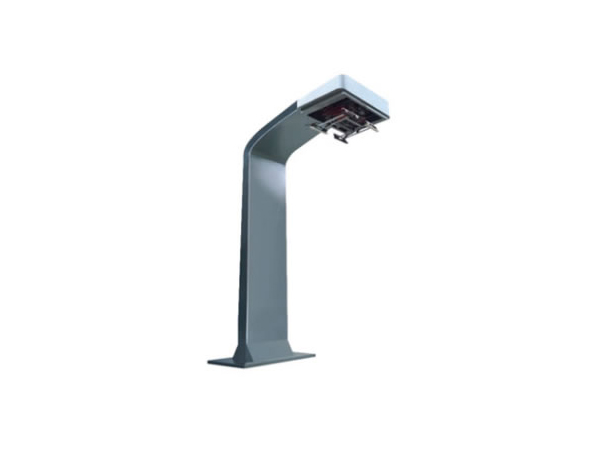-
13822183778@139.com
-
13822183778
Discussion on Load Calculation for Charging Pile Design
1、 Load calculation principle:
During the design phase, load estimation can be conducted based on the parking spaces for electric vehicles; During the preliminary design and construction drawing design stages, it is advisable to use the demand coefficient method for load calculation.
1.2 The construction of charging facilities for existing parking spaces should consider the capacity of transformers, and the load rate of transformers during peak electricity consumption should not exceed 100% when using single busbar connection, and should not exceed 60% when using single busbar segmented connection.

When the connection of charging facilities causes overload operation of the distribution transformer, technical measures should be taken to improve it. It is advisable to prioritize optimizing and controlling the charging power and charging time period, and if necessary, carry out capacity expansion and renovation of the distribution facilities. When increasing capacity, it should be combined with the development of surrounding loads and leave appropriate margins.
1.4 The meaning of 100% construction of charging facilities or reserved construction and installation conditions for new residential buildings with parking lots:
a) It is advisable to set up a dedicated substation separately, with a 20% configuration in the near future and a 45% configuration reserved for high and low voltage distribution equipment, transformers, and other locations in the long term. The construction should be carried out in stages (i.e. the substation should be equipped with 45% civil engineering conditions and fully designed and installed according to the 20% configuration).
b) There are three forms of design for regional distribution cabinets, end distribution boxes, and pipelines: ① fully designed and installed according to 100% configuration; ② According to the 20% configuration, all designs and installations are in place (regional distribution cabinet - end distribution box - charging pile), while the other 80% only consider routing, civil engineering and other conditions; ③ According to the 20% configuration, only the regional distribution cabinet is designed and installed in place, and the end distribution box is cancelled. The regional distribution cabinet directly supplies power to the charging pile, while the other 80% only considers routing, civil engineering, and other conditions.
2、 Capacity calculation of dedicated transformers for charging facilities:
SΣ=KtKxCn(KnPn+KmPm)/(ηcosΦ)
SΣ : Total installed capacity of transformer (kVA)
η : Transformer load rate, taken as 0.7-0.75
cosΦ : Compensated power factor, taken as 0.95
Pn: AC charging station (slow charging) installation power of 7kW; (Fast charging) installation power of 40kW;
Pm: DC charging pile (fast charging) installation power, (generally 60kW, 120kW)
Kn: The ratio coefficient of the number of slow charging parking spaces (i.e. the actual number of slow charging parking spaces/the planned number of parking spaces in the community) is 0.2 for the near term and 0.45 for the long term
Km: The ratio coefficient of the number of fast charging parking spaces configured (i.e. the actual number of fast charging parking spaces/the planned number of parking spaces in the community), with a short-term coefficient of 0.02 and a long-term coefficient of 0.045
Kx: Charging stations require a coefficient, and the number of charging stations (slow charging+fast charging) is 0.75-0.85 for 5-10; Take 0.55-0.65 for 10-50 pieces; Take 0.4-0.45 for more than 50 items
Kt: The coefficient of simultaneous use of charging stations is 0.85-0.9 for the number of charging stations (slow charging+fast charging), ranging from 5-50; Take 0.6-0.7 for 50 or more
Cn: Number of planned parking spaces in the community
The selection of Kt and Kx is mainly related to the following factors:
2.1 Usage of electric vehicles: Currently, the overall number of electric vehicles is not large, and the utilization rate of charging equipment itself is not high; The specific situation of each building is different.
Even if charged simultaneously, the battery status and performance of each electric vehicle are different.
2.3 In addition, slow and fast charging in residential areas are generally used at different times.
 How long does it take to charge ···
How long does it take to charge ···
 DC Fast Charging CCS type 2 plug
DC Fast Charging CCS type 2 plug
 The high-voltage and high-curren···
The high-voltage and high-curren···


